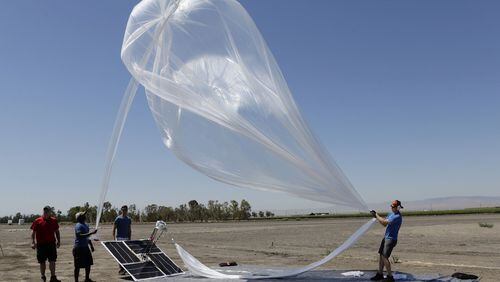A century ago, a popular song sheet wondered, “How you gonna keep ‘em down on the farm after they’ve seen Paree?” Would America’s doughboys resolve themselves to the so-slow rhythms of rural life after they’d tasted cosmopolitan Europe?
In the generations since World War I, the question’s been answered. Rural America has been losing its people without pause. Mechanization created bigger farms with fewer farmhands, the towns that made a trade from farming families hollowed out, and so on.
For those who remain, the Digital Age offers some hope to staunch the hemorrhaging of population. After all, the internet can take you on a virtual tour of the Eiffel Tower from your living room in boonies. The closest store might be a Walmart an hour away, but you don’t need even to get out of bed to shop on Amazon.
More importantly, there’s the promise of working remotely, chasing a degree online and, someday, telemedicine.
Except … rural internet moves at tractor speed.
Microsoft thinks it’s got at least part of the answer. Go wireless. Run broadband signals over a “white space” radio spectrum in between broadcast TV channels. It’s partnering with local phone companies in 12 states, including Kansas, to pipe broadband connections to another 2 million rural customers in the next five years. (A Microsoft spokesperson said the company does not have any details about its plan in Kansas or what firms it might partner with in the state.)
Much the way Google Fiber reflected the giant search engine’s effort to speed up the internet so people would stay online more, Microsoft wants you to plug into its remote cloud storage from anywhere.
White space frequencies look attractive because they fare better than other spectra over hills and through buildings and trees.
Yet the best internet hookups are actual wires, preferably fiber optic cable. The problem is that laying those lines is pricey, prohibitively so. It’s why even deep-pockets Google has largely paused the national rollout of its home connection network, hoping new wireless technologies can offer a cheaper way to leapfrog fat bandwidth to a living room.
And Google’s only been working in places with lots of people. As people per square mile goes down, the cost of megabits per second jets up.
Google parent company Alphabet’s Project Loon lofts giant balloons into the stratosphere to pass along internet signals, albeit sluggish, to the most remote parts of the world. Elon Musk’s SpaceX is rocketing up satellites for a spacebound network that might begin to deliver better internet speeds than a standard cable line in two years. Facebook’s toying with drones beaming down internet connections.
Meantime, cellular data networks and the coming of undefined 5G service will push quicker internet speeds farther beyond big cities.
All the ideas have potential. No single technology will likely serve all people in rural areas. As you get more remote, the costs will go up and the speeds will slow down.
The Microsoft pitch — from the least sexy of all of our tech-centric mega-corporations — is appealing partly because it’s so boring. Why wrestle with the complexity and expense of rockets or drones when you can turn on a radio transmitter?
How fast rural America closes its digital divide will likely turn on how much in government subsidies flow to the countryside, primarily through the Universal Service Fund. For decades, the tax on your phone bill paid the steep cost of rural phone service. In recent years, it’s been redirected to pay for low-end cellphone service for poor families and, to a greater degree, to wire schools and libraries to the internet.
So any push for more ubiquitous rural broadband will depend on competition for that money. We can take money away from your school internet to pay for connectivity in the hinterlands, keep it in city classrooms and let small towns fend for themselves, or raise taxes.
Whatever ideas help blanket back roads with internet connections — however prosaic or amazing — somebody will have to pay. It’ll probably be you.






